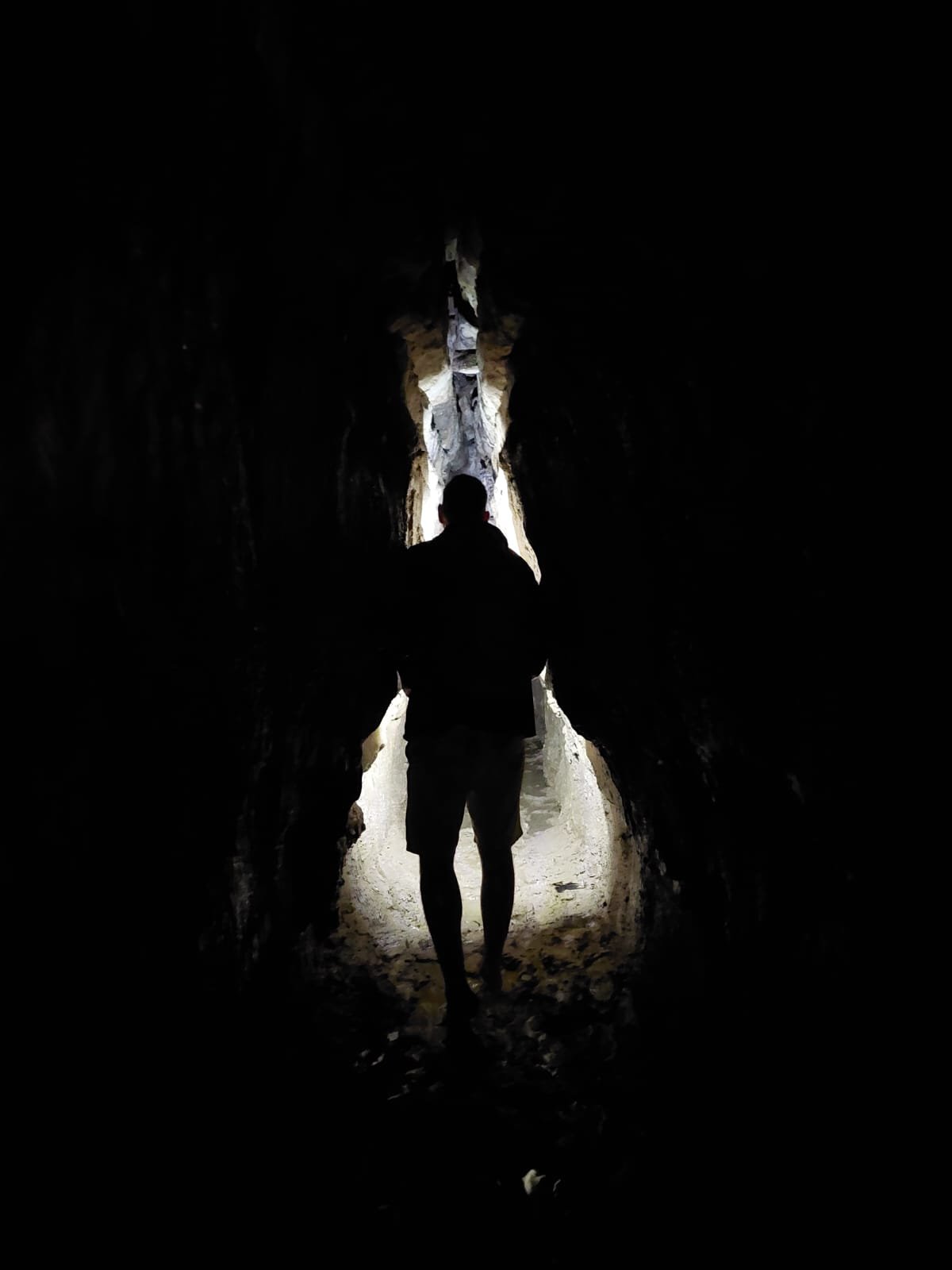Oweynagat
The Cave of the Cats (Photography courtesy of Laeg Winder)
This site will always hold a special place in my mind, having inspired my story, Deep Waters.
Oweynagat, the Cave of the Cats, also known as Ireland’s gate to hell lies in the ancient townland of Rathcroghan, county Roscommon, where the Connacht royals and their armies once gathered. A region filled with ancient heritage sites scattered throughout its locality. As the Irish landscape goes, I cannot think of anywhere else more steeped in mythology.
Ogham stone lintel as seen from within
The cave is synonymous with legendary figures including the Mórrígan, the Irish goddess of War, Queen Medb of Connacht, warrior champions such as Cú Chulainn, and shares strong bonds with Halloween.
The Mórrígan, a Celtic Goddess who can take the form of multiple beings, features in the Ulster Cycles’ Táin Bó Cúailnge. This story, often called the Táin, tells of Connacht’s Queen Medb’s attempts to capture the King of Ulster’s prize bull. During the conflict which ensues, the Mórrígan appears as a beautiful woman who tries to seduce Cú Chulainn, but rages against him when he rejects her advances, by attacking him as an eel, a wolf, and then a heifer, but each time is defeated.
The ancient Irish Celts, or Gaels, considered the cave to be the Mórrígan’s realm. They viewed it as a portal to the otherworld, the home of the Tuath Dé Danann, a race of supernatural beings who live there following the war between them and the mortal Milesians, the Gaels ancestors.
Ogham text, a type of linear etching, and Ireland’s earliest written language, carved on a lintel of the souterrain, near the cave’s entrance references Fráoch, son of Medb. In the Táin, Fráoch, a warrior renowned for his good looks, marries one of Medb’s daughters, so in this case son may more loosely signify son-in-law.
A shorter, precursory tale to the Táin, Fled Bricrenn (Briciu’s Feast), pits three Ulster champions against each other, and has their bravery tested by spending a single night inside the cave. During their stay, otherworldly wild cats besiege the warriors with all but Cú Chulainn succumbing to their terror.
It is claimed by some Irish historians that Oweynagat is the birthplace of Oíche Samhain, or Halloween, as we now know it. The idea of the cave as a portal to the world of the semi-divine ties in with the end of harvest Celtic belief that the barriers between the two worlds were at their weakest. They thought that during this time, the magical beings on the other side could cross over to our world. Later, Christian monks would view the cave as Ireland’s gate to hell, which they referred to it as, in their book, the Leinster manuscript.
Inside Darkness Prevails (Photography courtesy of Laeg Winder)
The cave is formed from limestone, with moon calcite deposits on the walls inside. The manmade entrance passage is dry stone (built without mortar), and thought to have been added during the Middle Ages. Its opening, like the rest of the souterrain, is a small, low crawl space. The Ogham stone referencing Medb and Fríoach, which acts as one of its lintels is located near the entrance.
The artificial passage runs for 3 meters before taking a sharp left turn into a second souterrain. Here, another Ogham stone lintel is located. Archaeologists believe the original builders took the Ogham stones from elsewhere and repurposed them as entrance feature. After another few meters, the passage opens out into a natural, roughly horizontal cave. This part of the cave is approximately 37 meters long. It dips roughly 7 meters below ground level at its lowest point into a muddy central bowl, before rising and levelling out to meet a collapsed end. Inside, the natural part of the cave is tall and narrow, with its sides only the arm span of a man or less for much of it. Towards the end of the passage, it tapers inwards to less than the shoulder width of a grown adult.
Despite its modest dimensions compared with some of Ireland’s more famous caves, Danann only knows how great the size of the Otherworld it leads to is.
Current Gaurdian of the Cave
The Rathcroghan heritage centre in the nearby town of Tulsk offer a comprehensive guided tour of the cave, so if you are planning to pay it a visit, it is best to book with them first.



